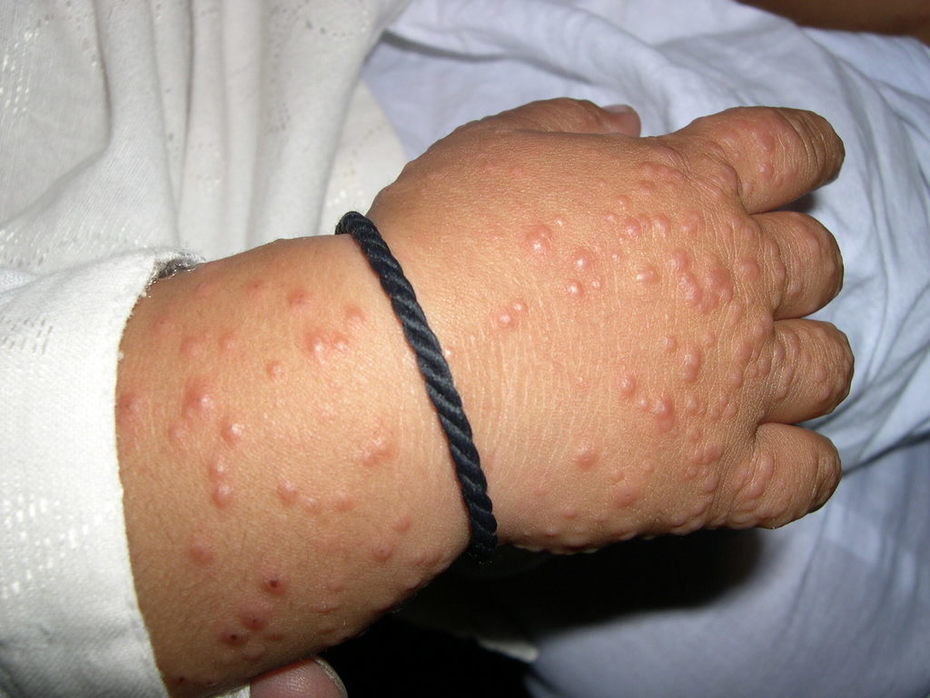Gianotti Crosti Syndrome: Symptoms, Causes, Treatment
What are the symptoms of Gianotti Crosti syndrome?
Gianotti-Crosti syndrome, also known as papular acrodermatitis of childhood, is a rare rash that primarily affects young children. The rash is typically characterized by small, firm, red or flesh-colored bumps that may be itchy. The rash usually appears on the buttocks, thighs, and legs, but can also occur on the arms, face, and trunk.
Other symptoms of Gianotti-Crosti syndrome may include:
- Mild fever
- Enlarged lymph nodes, especially in the neck and groin
- Occasionally, sore throat or upper respiratory symptoms
The rash of Gianotti-Crosti syndrome usually lasts for several weeks and then gradually fades away on its own. It is thought to be caused by a viral infection, most commonly Epstein-Barr virus (EBV), cytomegalovirus (CMV), or hepatitis B virus (HBV). However, the exact cause is not always identified.
Gianotti-Crosti syndrome is typically a benign and self-limiting condition, meaning it does not cause serious health problems and tends to improve without treatment. However, if you suspect your child has Gianotti-Crosti syndrome, it is important to see a healthcare provider for an accurate diagnosis and appropriate management.
What are the causes of Gianotti Crosti syndrome?
Gianotti-Crosti syndrome, also known as papular acrodermatitis of childhood, is thought to be caused by a viral infection, although the exact cause is not always identified. The syndrome is most commonly associated with infections caused by:
- Epstein-Barr virus (EBV): EBV is a common virus that causes infectious mononucleosis (mono). It is one of the most commonly identified viruses in cases of Gianotti-Crosti syndrome.
- Cytomegalovirus (CMV): CMV is a virus in the herpes family that can cause mild to severe illness, especially in people with weakened immune systems. It is another common virus associated with Gianotti-Crosti syndrome.
- Hepatitis B virus (HBV): HBV is a virus that causes hepatitis B, a liver infection. Infections with HBV have also been linked to cases of Gianotti-Crosti syndrome.
Other viruses that have been implicated in Gianotti-Crosti syndrome include adenovirus, coxsackievirus, enterovirus, parainfluenza virus, respiratory syncytial virus (RSV), and rubella virus.
It is believed that the viral infection triggers an immune response in the skin, leading to the characteristic rash and other symptoms of Gianotti-Crosti syndrome. The syndrome is not contagious and cannot be spread from person to person like the viruses that cause it.
What is the treatment for Gianotti Crosti syndrome?
Gianotti-Crosti syndrome, also known as papular acrodermatitis of childhood, is a self-limiting condition that typically resolves on its own without specific treatment. The rash of Gianotti-Crosti syndrome usually lasts for several weeks and then gradually fades away.
Treatment for Gianotti-Crosti syndrome is focused on relieving symptoms and discomfort. This may include:
- Topical corticosteroids: Mild topical corticosteroid creams or ointments may be used to reduce itching and inflammation associated with the rash. These medications should be used under the guidance of a healthcare provider.
- Antihistamines: Oral antihistamines may help relieve itching associated with the rash. These medications can also help promote sleep if itching is causing insomnia.
- Emollients: Emollients, such as moisturizing creams or lotions, can help soothe dry and irritated skin.
- Avoiding irritants: It may be helpful to avoid harsh soaps, detergents, and other irritants that can worsen the rash.
- Monitoring for complications: While Gianotti-Crosti syndrome is usually a benign and self-limiting condition, it is important to monitor for any signs of complications, especially if the child’s condition worsens or if they develop other symptoms.
In some cases, especially if the diagnosis is uncertain or if the rash is severe, a healthcare provider may recommend further evaluation or testing to rule out other possible causes. It’s important to follow up with a healthcare provider if you suspect your child has Gianotti-Crosti syndrome or if the rash does not improve with home care measures.




